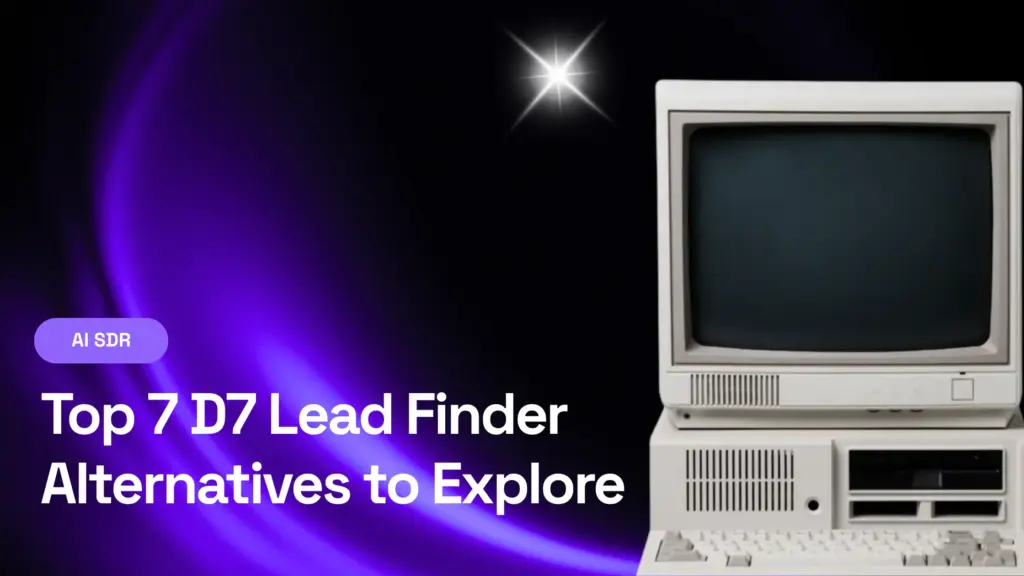Generating demand in insurance, and other financial services, and achieving its benchmarks isn’t as simple as pushing out ads or hoping referrals come in.
If you’re in the business of selling policies—whether it’s commercial insurance, health coverage, or liability plans— you understand the challenges of dealing with long sales cycles, heavy compliance requirements, and potential leads that won’t move until they absolutely trust you.
And that’s exactly where traditional lead gen hits a wall.
Demand generation isn’t just about getting seen—it’s about being remembered, about being trusted at the exact moment your prospects are actively shopping.
But is it really possible to build that kind of presence?
Especially in the complex insurance sector filled to the brim with noise and saturation?
Here at AnyBiz, we understand the importance of getting your voice heard in the whole hustle and bustle; and we understand more than anything else that focusing on smarter outreach and lead generation is what works for many industries.
This guide is here to help you do just that. We’ll break down B2B demand generation strategies designed for today’s insurance providers. Whether you’re running a small brokerage or an enterprise-level firm, these tactics will help you stay visible, relevant, and consistently in front of the right clients.
Why Demand Generation Matters in Insurance
Traditional cold calls and email blasts don’t work the way they used to. If you’re relying on referrals alone, you’re leaving your pipeline to chance.
B2B insurance buyers want more—they expect a provider that understands their pain points before the first meeting even happens.
According to Salesforce, 73% of customers expect companies to know their needs and expectations. That’s not just a nice-to-have. It’s your entry ticket into the conversation.
Here’s the reality: your target audience is doing homework long before they click “book a call” or make a purchase. Buyers have more options now, that means that they are already comparing quotes, reading reviews, and are already checking your claims and coverage.
And they are doing this without you knowing it, and if you do not have the capacity to develop power through all the noise then you will be left in the void.
Many insurance marketers and sales leaders often take the term “power through” quite literally in their sales process. They enforce their insurance right down to their client’s throat not giving them enough room to breathe; an interesting strategy, but not really the most effective.
What we find that is most effective is moving in silence.
But how?
We found that it is not about spamming inboxes or adding more pressure to your buyers. You need to position your brand, product or service as the ultimate solution — or the most ideal solution — to their needs and pain points. Creating interest, then nurturing that interest then building a relationship automatically, consistently and at a scale.
This is the entire principle of demand gen, and for the insurance sector this can be the one of the most effective marketing strategies.
The following are the most effective demand generation campaign that will help you create a demand for your product and generate high-quality leads.
Demand Generation Strategies for Insurance Sectors
Strategy #1: AI-Powered Personalization
Let’s be honest—nobody responds to generic outreach anymore.
AI-powered personalization lets you cut through the noise and connect with real decision-makers using data-backed context. With platforms like AnyBiz, you can deliver custom messages that speak directly to where your prospect is in the buyer’s journey.

Here’s what that looks like in practice:
- Custom Email Sequences: AnyBiz tailors outreach based on engagement levels. If they clicked your email but didn’t reply, the AI adjusts the tone or CTA.
- Smart Landing Pages: The tool auto-generates customized landing pages aligned with each prospect’s insurance needs. No manual design work—just fast, dynamic personalization.
- Lead Prioritization: AI scores each lead using behavior signals so your sales team knows who’s worth chasing now—and who needs more nurturing.
Bottom line? The AI handles the heavy lifting so you’re always one step ahead with the right message, at the right time.
Strategy #2: Using Intent Data to Spot Active Buyers
Would you rather chase every lead—or just the ones actively shopping for coverage?
That’s what an intent data signal helps you do.
By analyzing online behavior like keyword searches, site visits, and content engagement, you get real-time insights into who’s in-market for your services and confirm which of your prospects are likely to engage.
For example, if a business is researching fleet insurance for logistics companies, that activity becomes a trigger. AnyBiz can detect it and uses AI to find high-intent leads, then automatically send a relevant message before the competition even knows that lead exists.
What you gain:
- Faster Lead Qualification: You spend less time on cold leads and more time on warm ones.
- Relevant Messaging: No more guessing what to say. You know exactly what problem they’re trying to solve.
- Higher Conversions: Timing matters. If you show up right when they’re researching, you become the go-to option.
This is the insurance version of being at the right place at the right time—only smarter and automated.
Strategy #3: Content-Led Lead Magnets That Pull (Not Push)
Insurance buyers don’t make decisions overnight. They read, compare, and calculate risk—sometimes for weeks or months, which makes content creation an important strategy for your demand generation programs.
And your content has to meet them where they are.
Lead magnets and high-value contents like whitepapers, checklists, and calculators give prospects something useful while subtly guiding them toward your offer, which can develop and improve your lead conversion.
The trick? Create content that’s both educational and practical.
What works well in insurance:
- Risk Checklists: A downloadable PDF for “10 Coverage Gaps Every Business Should Avoid” does more than educate—it qualifies your lead.
- Thought Leadership Contents: Present industry insights, reports or compliance break, these type of contents can help build credibility.
- Premium ROI Calculators: Interactive tools that show estimated pricing build transparency and keep visitors on your site longer.
- Case Studies: Real-world wins (especially for niche industries) are gold. Use them to prove ROI and build trust.
These lead magnets become high-quality entry points into your funnel—pulling prospects in rather than pushing products out.
Strategy #4: Marketing Automation That Nurtures at Scale
If your sales team is still following up manually, you’re leaving money (and time) on the table.
B2B marketing is advancing, that means that you should too.
Many B2B marketers are now employing marketing automation that takes your best-performing emails, B2B content, and timing—and turns them into always-on, follow-up machines.
With AnyBiz or similar tools, you can set up smart sequences that adapt to each lead’s behavior:
- Drip Campaigns: Got a lead that downloaded your whitepaper but hasn’t booked a call? Send a three-part email series breaking down key takeaways and offering a consult.
- Action-Based Triggers: If a prospect opens an email but doesn’t reply, the AI adjusts the message and follows up in two days.
- Sales-Ready Alerts: Once a lead hits a certain score (e.g., they visited pricing twice), the system pings your sales team for fast action.
This is how you keep interest alive without burning out your team. And better yet—it works around the clock.
Strategy #5: SEO That Brings Inbound Traffic While You Sleep
If you’re not showing up when someone Googles “business insurance for retail companies” or “cyber liability coverage,” you’re invisible to 90% of buyers.
SEO is your long-term demand generation engine. It takes work, but it pays off in compounding returns and eventually can help you improve your conversion rate.
Your demand generation efforts for SEO should include:
- Keyword Strategy: Go after TOFU, MOFU, and BOFU keywords. Think “how to reduce insurance premiums for construction” (TOFU) or “best PEO insurance provider” (BOFU).
- Local Optimization: Make sure you’re listed in Google Business and insurance directories. If you serve a region, own that region in search.
- Content Clusters: Create a pillar page for “Insurance for Tech Startups,” then build subtopics like “Errors & Omissions,” “Employee Benefits,” etc.
This positions your firm as the authority when prospects are actively searching—without spending on ads every month.
Strategy #6: Account-Based Marketing (ABM) for Enterprise Clients
Not all leads are created equal. For big-ticket policies and enterprise clients, you don’t wait for them to come to you—you go to them.
That’s where ABM shines.
With ABM, you identify your ideal clients (e.g., SaaS companies with 200+ employees), then build a multi-touch campaign targeting those specific accounts.
How to do ABM right:
- Targeted Lists: Use firmographic data and tools like AnyBiz to build lists of high-fit companies, AnyBiz, has a prospect database of over 400 million personas, and AI sales agent that is capable of handling a large lead volume using its multi-channel attribution capabilities.

- Hyper-Personalized Outreach: Every touchpoint—from emails to landing pages—is custom-built around their industry, risks, and goals.
- Sales + Marketing Alignment: Everyone’s on the same page, tracking the same leads, pushing toward the same conversion point.
The result? Fewer, better leads—and a much higher close rate.
Strategy #7: Social Media for Building Brand Awareness
Let’s face it: no one logs into LinkedIn thinking, “I’m ready to buy insurance today.” But they do scroll to learn, to stay updated, and to build trust with people and brands that show up consistently.
That’s where social media brand awareness comes in—not to sell immediately, but to make your presence felt long before a buying decision is even made.
Using tools such as AnyBiz can improve your social media and brand awareness strategies, we’ve developed a seamless social media integration process creating brand awareness with our AI sales agent to help you with posting and other content engagement to establish your social media presence and brand awareness.
You can integrate your social media accounts such as:
- X (formerly Twitter)
Final Thoughts: Demand Generation That Actually Works
The insurance industry doesn’t need more noise—it requires smarter strategies that allows you to be precise and strategic.
And no matter which insurance policies are you trying to sell, you can guarantee that you can create demand for it as long as you take action deliberate it carefully.
Incorporating the following strategies helps sustain your marketing and sales strategies by attracting better leads, building trust, and shortening that sales cycle without burning out your team.
If you’re ready to modernize your outreach and finally scale demand generation with less friction, AnyBiz can help you get there—faster, smarter, and with a fraction of the manual effort.
Try it for 7 days at just $0.99 or book a demo to see how it works in real-time.



